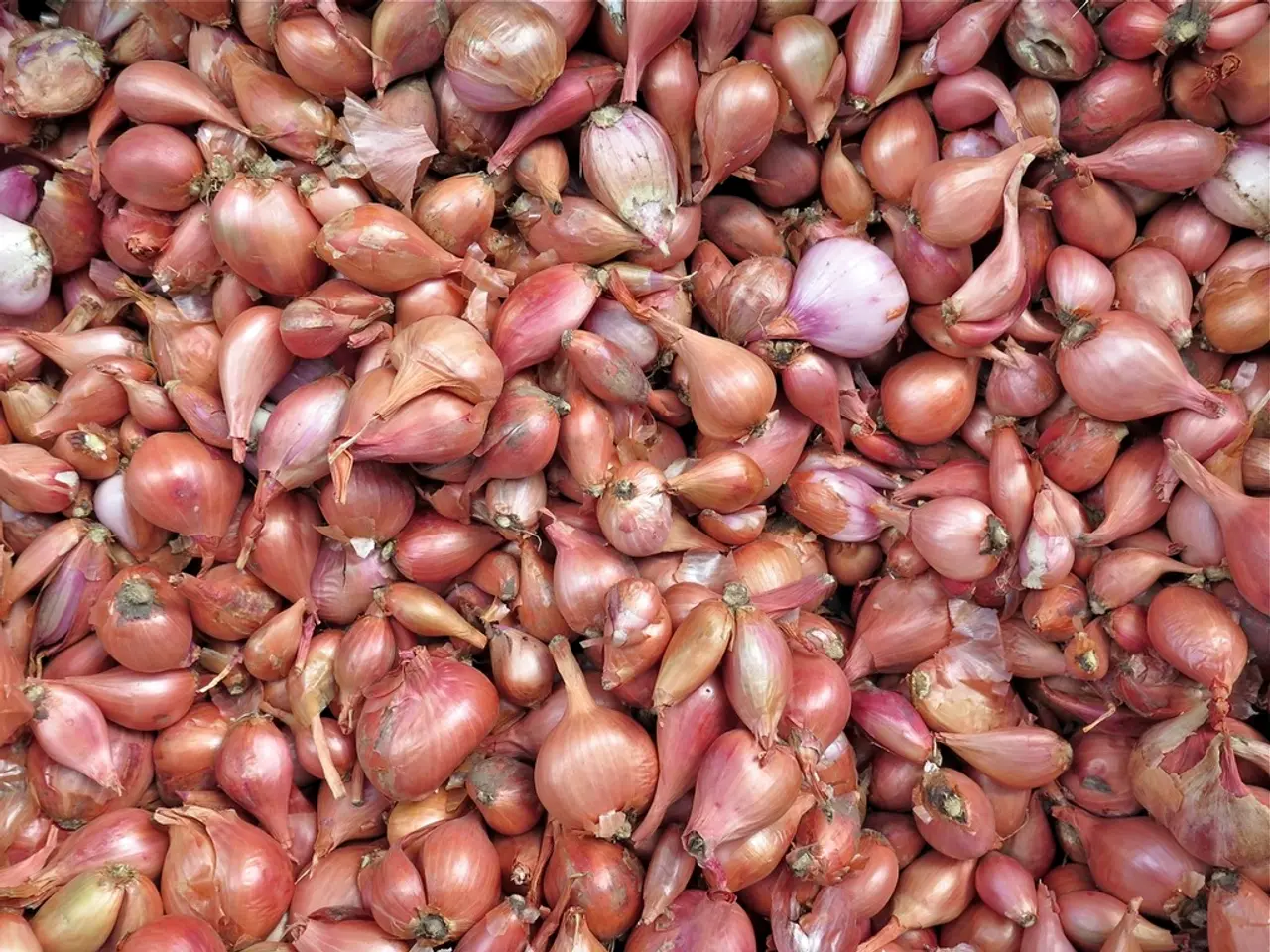All You Need to Know About Onion Cultivation and Preservation: A Detailed Handbook
Onions, a staple in many kitchens, are not only versatile in cooking but also worthwhile additions to any diet due to their sweet taste. Whether you're a seasoned gardener or a beginner, growing onions at home can be a rewarding experience.
There are several types of onions to choose from, each with its unique characteristics. The commonly used cooking onion, often referred to simply as an onion, is medium-sized, hardy, easy to grow, and can be stored for a long time. On the other hand, the sweet or Spanish onion is excellent for adding to salads, eating raw, or making onion rings. It is not as resilient as cooking onions, requires more space to grow, and does not store as long.
Onions can be grown from seeds or sets, with sets being the easier option for beginners. Onion sets are small onions that are grown from seeds but not allowed to mature. Onions grown from sets do not store as well as onions grown from seeds, but with proper curing, they can still be stored for a couple of months.
When it comes to choosing the right onion variety for your garden, the day-length your region receives during onion bulb formation plays a significant role. Onions are categorized into long-day, short-day, and day-neutral onions, with the category depending on the number of daylight hours required for bulb production.
Long-day onions (bulb forms when daylight lasts 14-16 hours) are best for northern temperate climates with latitudes roughly 37 to 47 degrees north. Examples include Walla Walla, Ailsa Craig, Yellow Sweet Spanish, Ruby Red, and Tropea Rossa Tonda varieties.
Short-day onions (bulb formation at 10-12 hours daylight) thrive in southern or subtropical climates near the equator. Examples include Texas Grano (a yellow onion with good disease resistance and shelf life), Burgundy Red, and White Grano onions.
It's important to note that onions need moisture to get established in spring but prefer well-drained soil to avoid rot. They also require warmth to germinate, around 15-20°C (59-68°F), and cool weather to grow and warm weather to form a bulb.
Protecting against onion maggots with insect mesh can be beneficial. Onions can be grown using the winter sowing method, which involves planting seeds in a container, watering well, and keeping the container in an area with a temperature of 15-20 degrees Celsius for germination. After germination, the seedlings require cooler temperatures and plenty of light.
For those who have difficulty growing onion bulbs or are simply interested in greens, scallions, also known as green onions, are an excellent choice. They can be planted early in the spring and will continue to grow throughout the summer, giving you a constant supply of fresh greens.
In summary, choose onion varieties based primarily on your local day-length regime (long, intermediate, or short-day onions) to ensure proper bulb development. Then consider disease resistance, storage life, and flavor according to your preferences and local growing conditions. Happy gardening!
- In a cold climate, long-day onions like Walla Walla and Ailsa Craig are suitable choices for preserving these versatile vegetables in your garden.
- When planting onions in your garden, make sure to provide them with well-drained soil, as they require moisture to establish in spring but prefer not to get waterlogged.
- If you're a beginner in gardening, consider opting for onion sets instead of seeds for an easier start in your garden.
- Onions grown from seeds can be stored for a longer period compared to onions grown from sets; however, the latter can still be stored for a couple of months with proper curing.
- Incorporating compost into your garden soil can help promote healthy onion growth and ensure a successful harvest.
- During the growing season, don't forget to protect your onions from onion maggots by using insect mesh as a barrier.
- For year-round fresh greens, consider planting scallions, or green onions, which can grow throughout the summer in your home-and-garden-focused lifestyle.
- Explore various food-and-drink and recipes that incorporate onions to expand your culinary repertoire and enhance your lifestyle with the delicious flavors of this versatile vegetable.




